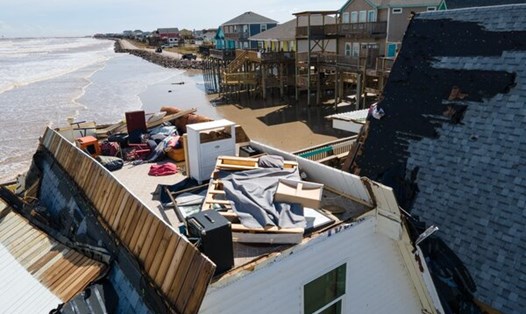On July 12, the National Oceanic and Atmospheric Administration (NOAA) said that La Nina weather patterns are expected to continue to develop in the coming months, possibly affecting the end of the 2024 hurricane season and the upcoming winter.
After El Nino officially ended in June, water temperatures in the eastern and central Pacific near equator remained near average for the month. That means neither El Nino nor the opposite La Nina situation will continue. ENSO (the transition between El Nino and La Nina) is currently in the neutral phase.
The analysis of sea surface temperature below shows that the equatorial Pacific Ocean feels both cooler and warmer than average.
It is forecasted that in the coming months, the water temperature in the equatorial Pacific will gradually cool down to the threshold of meeting La Nina conditions.
According to NOAA's latest update, there is a 70% chance of La Nina developing between August and October - the focus period of the Atlantic hurricane season.
This latest forecast is different from previous forecasts showing that La Nina is expected to appear from September to November.
There is a 79% chance of La Nina lasting into late fall and winter (from November 2024 to January 2025).
La Nina is a phenomenon in which the temperature on the ocean surface in the cold Pacific Ocean goes away. This phenomenon usually occurs every 3 to 5 years, but according to NOAA, the La Nina shape can last for many years.
La Nina could increase storm activity as it typically reduces wind shear in tropical areas. Meanwhile, according to NOAA, high sea temperatures in the tropical Atlantic and Caribbean seas will fuel development storms.
The Atlantic hurricane season is active, especially in the western Caribbean Sea and Gulf of Mexico.
The outlook for La NiNa has prompted meteorologists to adjust their 2024 hurricane season forecasts this week.
Colorado State University's hurricane forecast released on July 9 said that this year's hurricane season is expected to have 25 named storms, 2 more than previously forecast. These 25 storms include three that have already emerged: Alberto, Beryl and Chris.
Meanwhile, VNA reported that according to the Vietnam National Hydrometeorological Agency, the La Nina phenomenon will cause the risk of heavy rain, storms and floods in the last months of the year, especially in the Central region.
From now until the end of the year, there will be 10-12 storms and tropical depressions active in the North East Sea, of which about 5-7 will directly affect Vietnam; the possibility of strong storms appearing in the East Sea cannot be ruled out.











